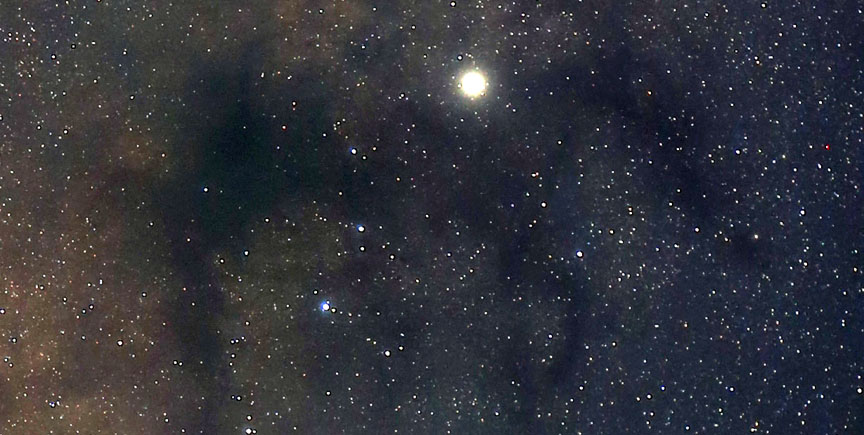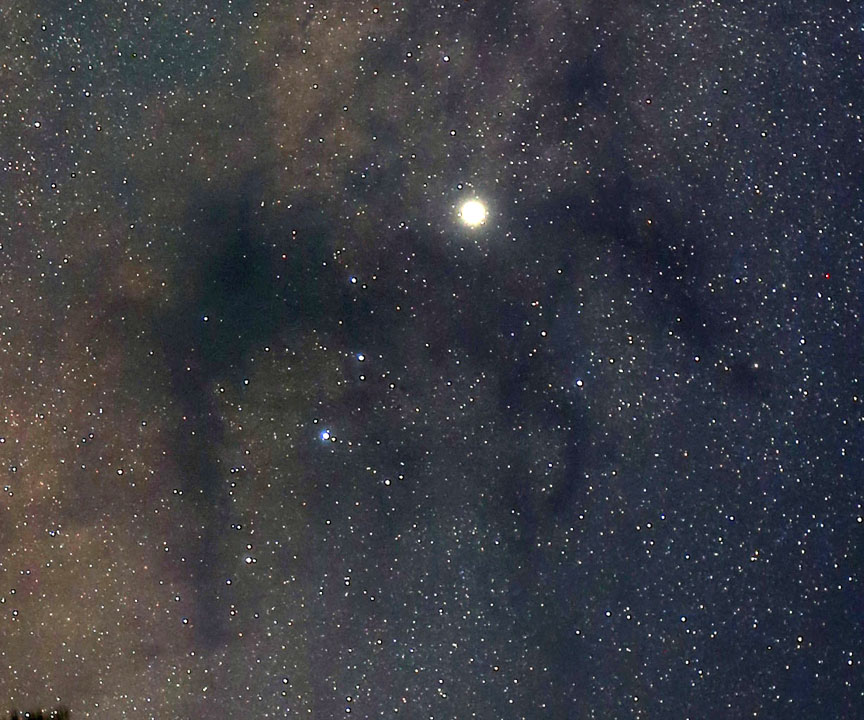
I didn’t notice it with the naked eye, but as soon as the time exposure ended and I looked at the camera’s back display, there it was — Saturn riding barebacked on the Galactic Dark Horse! The horse, more of a prancing pony, is a collection of dark nebulae in the southern sky beautifully placed for viewing on late June evenings. The Dark Horse is part of the Great Rift, a dark gap that splits the band of the Milky Way in half, starting at the Northern Cross and extending all the way down to the “Teapot” of Sagittarius in the south.

While appearing to be little more than empty, starless space, in reality the Rift consists of enormous clouds of cosmic dust and gas in the plane of the galaxy called dark nebulae that blot out the light of more distant stars. If you could suck it all up with a monster vacuum cleaner and expose the billions of stars otherwise hidden, the Milky Way would cast obvious shadows — even suburban skywatchers would routinely see it.
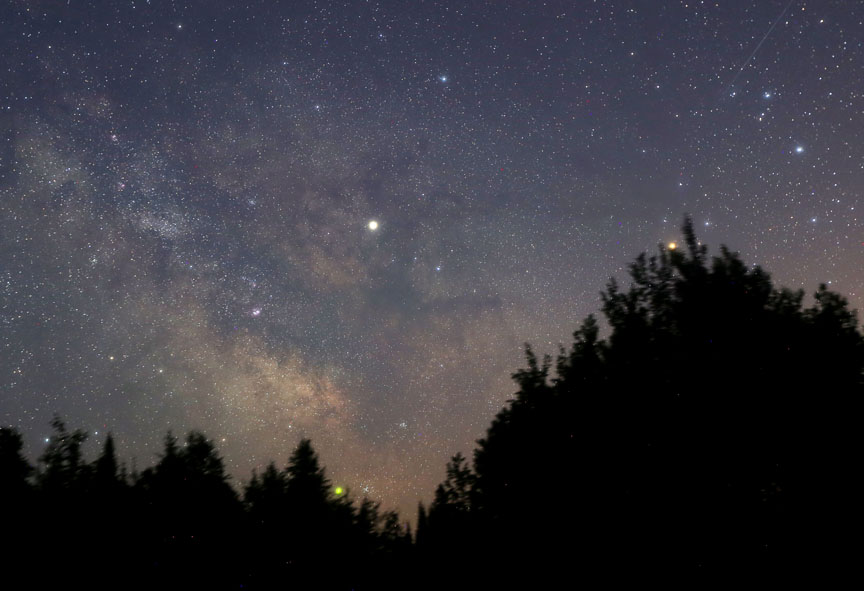
Tiny dust particles spewed by older, evolved stars and exploding supernovas have been settling in the plane of the galaxy since its birth 13.2 billion years ago. While the dust is sparse, it adds up over the light years to form a thick, dark band silhouetted against the more distant stars. Gravity has been at work on the dust since the earliest days, compressing the denser clumps into new stars and star clusters. But much raw material remains. Within the curdles of dark nebulae, astronomers use dust-penetrating infrared and radio telescopes to watch new stars in the process of incubation.
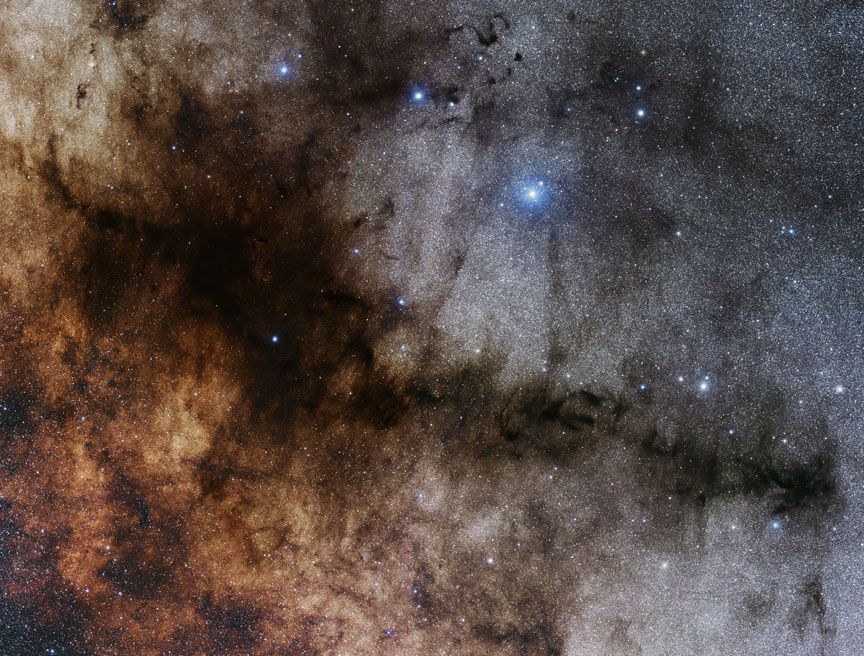
There are more obvious parts of the Rift to the naked eye but few conjure up as striking an image as the Dark Horse, located about one outstretched fist to the left of the Scorpius’ brightest star, Antares. Saturn sits astride the horse’s back or eastern side. While it’s fun to see the horse as a single figure, astronomers catalog the various body parts as individual dark nebulae with separate numbers and even names. The largest part of the horse, the hind leg, is nicknamed the Pipe Nebula and lies 600-700 light years away. The Pipe is further subdivided into B59, B72, B77 and B78, from a survey of dark nebulae by early 20th century American astronomer E.E. Barnard.
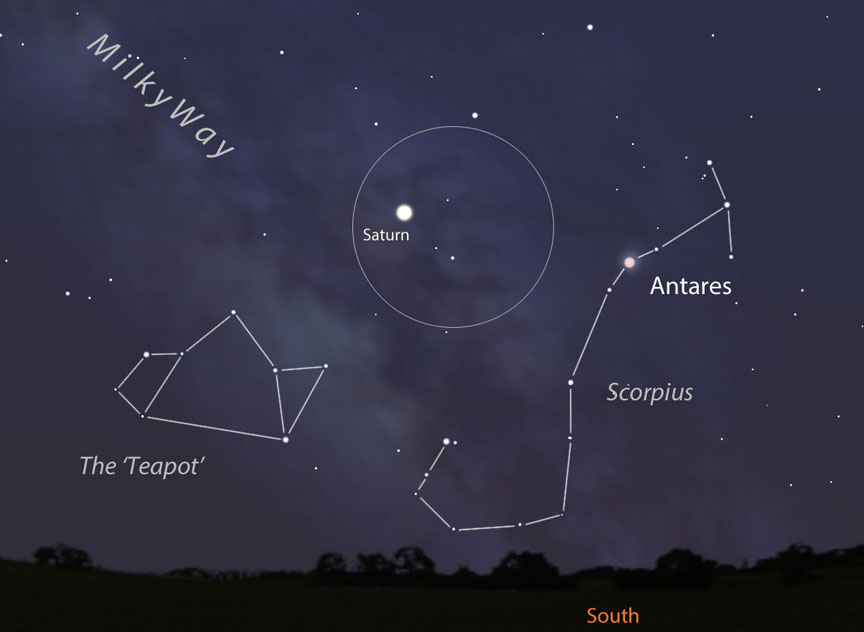
While the dark horse shows up well in time-exposure photos, you’ll need dark, rural skies to view it with the naked eye. It’s only a couple fists high for those of us living in the northern U.S. and southern Canada, but considerably higher up from the southern states and points south. The figure is large but faint, about 10° long by 7° wide, and stands due south and highest in the sky around 12:30 a.m. in late June. Allow your eyes time to fully dark adapt beforehand. Try for the dark rump and hind leg first then work from there to fill in the rest of the horse.
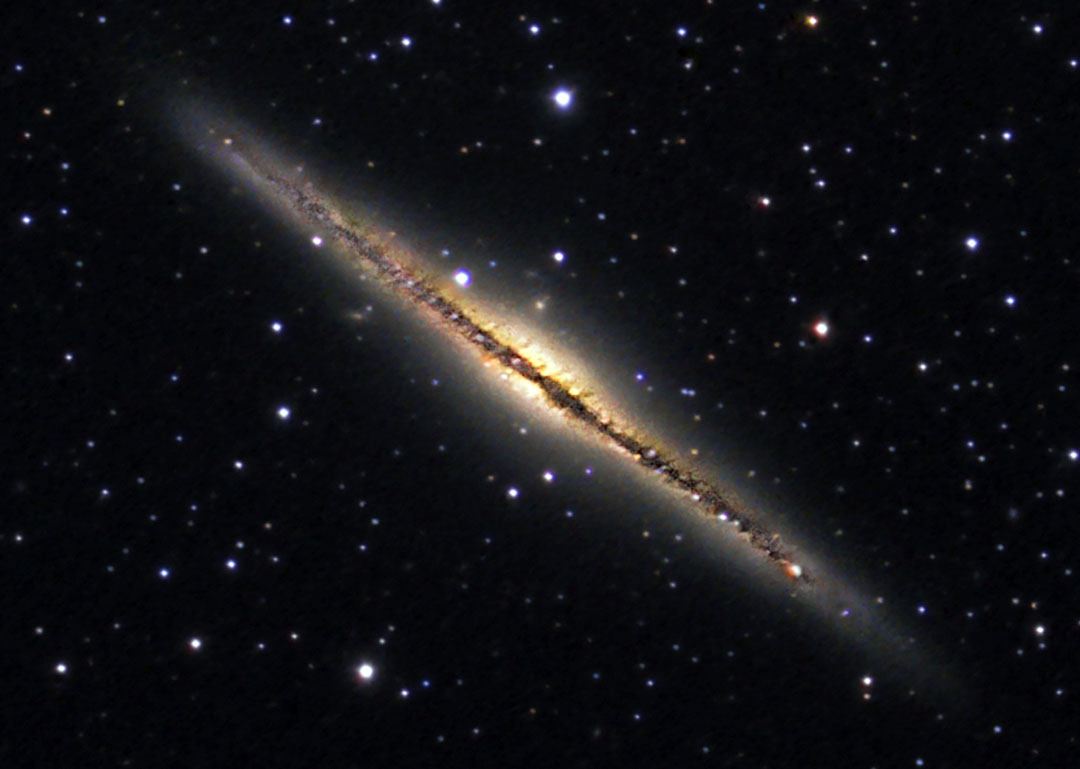
Once I knew what to look for, I could fleetingly see the entire horse with its various protrusions as a subtle darkness against the brighter Milky Way. Averted vision, the technique of playing your eye around the subject rather than staring directly at it, helped make it happen. Wide-field binoculars will show it easily and in greater detail against a fabulously rich star field.
The best time to horse around under the Milky Way happens from now till the end of the month, when the bright Moon sends the critter into hiding.

